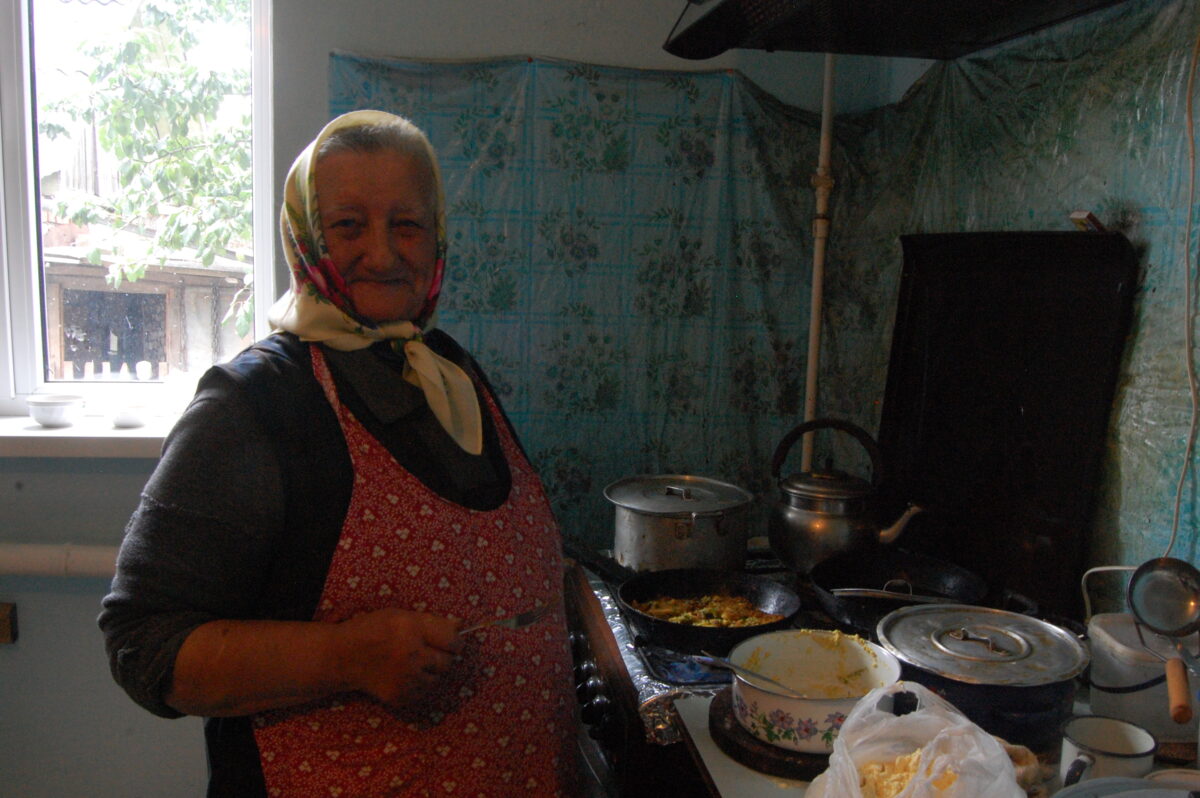Blinis with Wild Plant Additions
They also made small flatbreads. During times of hunger, they made flatbreads from rye and wheat flour. To stretch the dough further, they added things like beet leaves or linden leaves in the summer. Not the flowers, just the leaves. They cut the leaves with a knife and added them to the dough to make more of it. They did the same with clover leaves and flowers. Hawthorn was also added. My neighbor has a hawthorn tree, and whenever I see it, it reminds me of those times.*
*Luba Dmytriwna (Khmelnytskyi Oblast) Born 1936
Rye and Wheat Flour Flatbreads with Wild Plant Additions
Ingredients:
- 1 cup rye flour
- 1 cup wheat flour (or only rye flour if wheat is not available)
- Beet leaves (optional: linden leaves, clover leaves, or other wild herbs like clover flowers)
- Water (enough to form dough consistency)
- Salt (if available)
Instructions:
- Prepare the leaves: Gather fresh beet, linden, clover, or other wild leaves. Finely chop them with a knife to increase the dough’s volume.
- Prepare the dough: In a bowl, mix the rye and wheat flour with water to form a smooth dough with a consistency similar to thick cream. If salt is available, add a pinch for flavor.
- Add the herbs: Stir in the chopped leaves and, if available, hawthorn berries. Mix everything well.
- Cooking: Fry the flatbreads on a heated pan until golden on both sides. If there is no oil, this can be difficult, but the flatbreads can also be baked on hot stones.
- Serving: The flatbreads are ready to eat. They can serve as a main meal or as a supplement when other ingredients are scarce.
HOLODOMOR
The Ukrainian word Holodomor signifies death by starvation and refers to the tragic events that unfolded in the Ukrainian Soviet Socialist Republic between 1932 and 1933, following the Soviet authorities’ imposition of forced collectivization. This process was accompanied by a ruthless obligation to deliver unpaid quotas of agricultural products, set at levels far beyond what the rural population could produce.
As grain stocks in the granaries dwindled, peasants tried to hide what little they had left to survive the winter and save seeds for planting. However, the combined forces of Communist Party activists and the NKVD were so efficient that very little grain could be preserved. Tax collectors, armed with sharpened rods, would go from house to house searching for hidden supplies. If they found anything, they took it along with the household head.
The famine that struck fertile Ukraine was politically engineered. Several million people died of hunger, and there were even reports of cannibalism.
In their desperation, people searched for food in the collective farms’ fields. In response, the authorities issued a decree, commonly known as the “Law of Five Ears of Grain.” Stealing or squandering “socialist property”—even as little as five ears of grain—was punishable by death or ten years in a labor camp. Within a year and a half, over 125,000 people were sentenced under this law.


 Gaza
Gaza 
